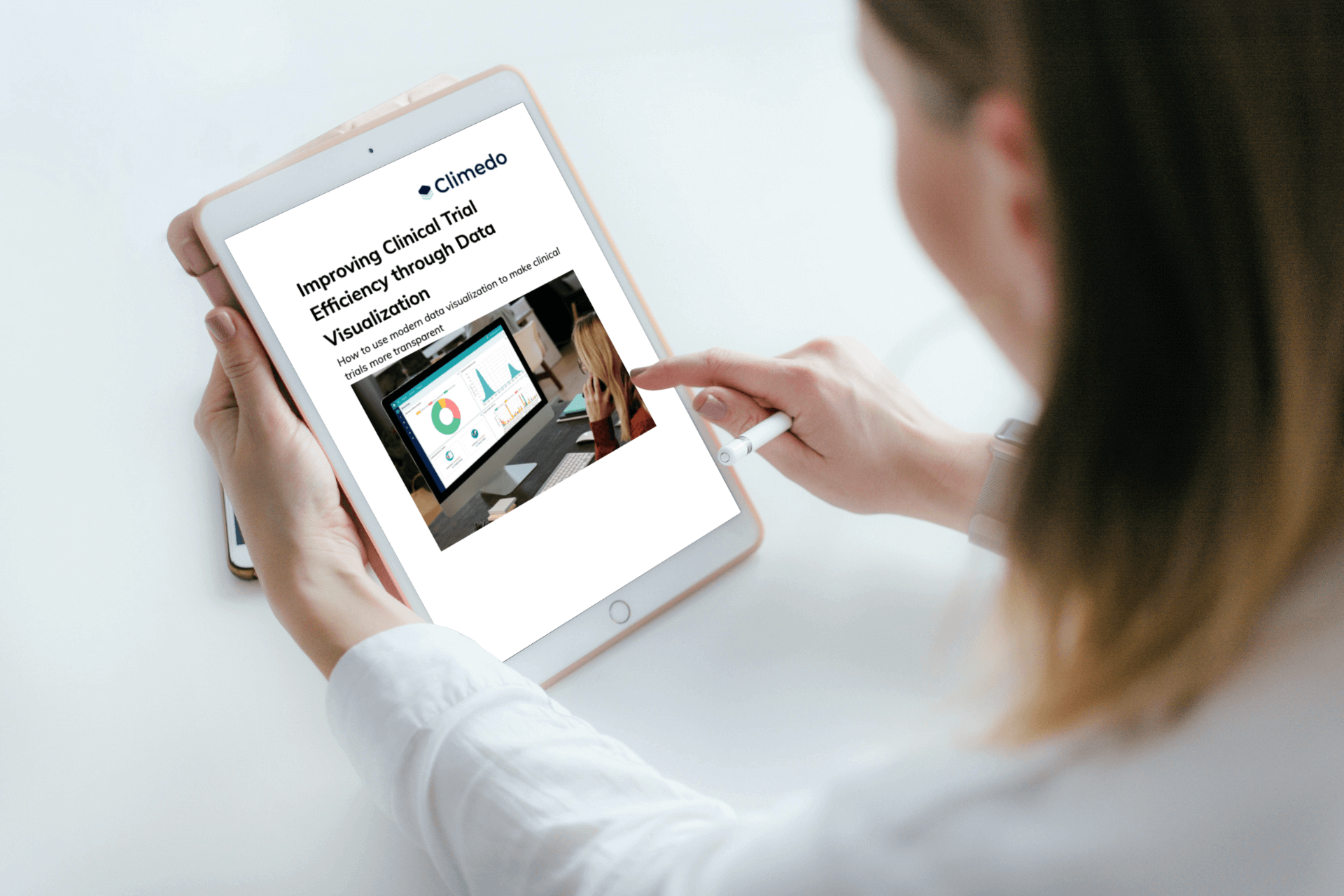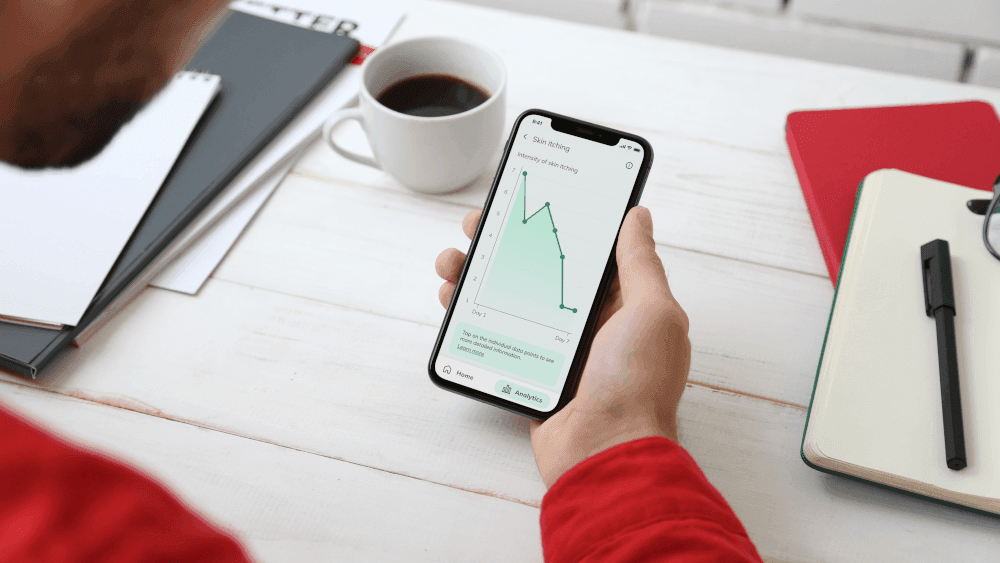How Does Telemedicine Improve Gastroenterology?

DATE
August 12, 2022
AUTHOR
Benjamin Sauer | VP Engineering
Living outside of major cities makes it more difficult to access gastroenterological treatment. Patients therefore need to be prepared for long journeys and even longer waiting times. The reason is that gastroenterological care is inadequate in rural regions. But there is a way to expand medical care and save costs at the same time: Telemedicine. During the Covid-19 pandemic, telemedicine already proved its effectiveness in many areas and will most likely continue to help us meet the growing challenges in healthcare in the future.
But what is telemedicine exactly? It is the exchange of medical information through electronic communication – including emails, video calls and smartphones, but also medical wearables and ePRO – with the aim of improving patient health. A US study found that the concept is well received by patients thanks to its flexibility: Although only 8% of respondents had experiences with telemedicine, 66% said they would like to try it. Nevertheless, only about 7-9% of gastroenterologists have used it so far, the second lowest percentage of all internal medicine specialties.
However, since a relatively large number of gastrointestinal diseases develop a chronic course and subsequently require long-term care, gastroenterology particularly benefits from telemedicine services. In this article, we will show how telemedicine can improve gastroenterology care in the long term.
Telemedicine offers different benefits in gastroenterology:
1) Cost savings
2) Optimized time management
3) Closer exchange between physicians
4) Better patient retention
1) Cost savings
Face-to-face appointments with specialists cost money – and the further away patients live from their gastroenterology practice, the more money it costs. The density of medical care decreases significantly in rural regions, and public transport systems are often poor. As a result, patients have to face particularly long journeys and high travel costs. Depending on the job, absences from work can also have a financial impact, e.g. if payment is on an hourly basis.
Especially in the case of chronic gastrointestinal diseases that require regular visits to the doctor in the long term, telemedicine promises financial relief. If some of the face-to-face appointments are replaced by video conferencing, there will be less travel overall. This means shorter absences from work, and possibly also less childcare by third parties.
But telemedicine can also bring financial benefits to healthcare providers. Its use reduces the likelihood of medication misuse, the number of unnecessary emergency room visits and the average length of hospital stays. All three factors help reduce the burden on the healthcare system in the long term. Practices and clinics also have lower overall costs per patient when fewer people are treated on site. In addition, the need for short-term patient visits is reduced. Instead, more regular online check-up appointments take place, which facilitates staff management.
2) Optimized time management
Travel to the gastroenterology practice takes time. Due to the generally low density of care provided by gastroenterologists, a simple travel time of more than one hour is not uncommon in cities. In rural areas it sometimes takes even more than two hours. An on-site appointment thus determines the entire daily routine of patients and their relatives, e.g. parents of sick children. This requires complex time management which often begins before the actual day of the appointment.
Telemedicine can particularly improve the symptoms of chronic diseases such as irritable bowel syndrome, inflammatory bowel diseases or celiac disease – without exposing patients to the additional stress of a long journey or missed working hours. Telemedicine offers patients the opportunity to organize their daily lives more efficiently, relieve the burden on family members and thus improve their well-being – which in turn can have a positive effect on the symptoms of the diseases.
Whitepaper: Improving Clinical Trial Efficiency through Data Visualization
The enormous amount and variety of data in clinical trials require new approaches to be captured accurately. In our whitepaper we show you different types of data visualization and how to improve the efficiency of clinical trials.
What’s it about?
- Possibilities for data visualization
- Visualizing individual trajectories and progress for instant case analyses
- Real-time benchmarking for inventory and trend analysis
- Future of data visualization

3) Closer exchange between physicians
Usually, primary care physicians are the first point of contact and are responsible for the continuous care of patients. Especially in rural areas, but also in urban areas, general practitioners report considerable obstacles in communicating with specialists. Telemedicine offers opportunities to improve the professional connection between physicians of different specialties and thus the overall care of patients by their primary care physicians.
When physicians coordinate their treatment and exchange information, everyone involved benefits. General practitioners know their patients well and provide gastroenterologists with an insight into the medical history as well as psychosocial and cultural factors from the patient’s environment. However, the specialists bring in-depth knowledge of the specific diseases and corresponding resources. Through the exchange of knowledge and experience, physicians can further develop themselves on a professional level. Additionally patients receive a therapy that is optimally tailored to their needs and the characteristics of their disease process.
4) Improved patient retention
Financial savings, less time lost and better care – all these benefits of telemedicine have an impact on patient satisfaction and consequently patient engagement. All three aspects reduce the psychological stresses that patients face, for example, due to ongoing cost or time burdens. In addition, the focus of telemedicine, particularly in the case of chronic gastrointestinal diseases, is often on psychological care and disease management programs that support patients in dealing with their disease.
For irritable bowel syndrome, inflammatory bowel disease, and celiac disease, complementary telemedicine care has been shown to reduce bowel symptoms and has been associated with improved quality of life in clinical trials. This persisted up to a follow-up period of 12 months. Closer gastroenterology care allows patients to better express their needs regardless of physical distance, giving them a more active role in the management of their disease. In this context, further studies showed that eHealth disease management generally has a positive impact on quality of life, adherence to treatment, and acquired knowledge about the disease.
Conclusion: Telemedicine in gastroenterology saves resources and improves medical services
Telemedicine brings many benefits that enhance gastroenterology care. Especially patients in rural areas have to cope with increased financial and time investments due to the relatively poor density of care in gastroenterology. In addition, primary care physicians complain about the accessibility of gastroenterologists via conventional communication channels. Telemedicine approaches not only reduce the need for time-consuming physician visits, but also facilitate communication between physicians.
The positive feedback on telemedicine services observed in several studies shows that good patient care does not always have to be provided exclusively in person and on site. The intent of telemedicine is not to replace traditional treatment, but rather complement it in a meaningful way. It can improve the all-round quality of medical care while reducing costs for patients, healthcare providers and the healthcare system. Telemedicine offers great potential for optimizing the management of chronic gastroenterological diseases.
In order for both patients and physicians to benefit from telemedicine, the concept must first become more widespread in gastroenterology. To achieve this, further studies are needed to examine the already proven effectiveness in more detail – and now it’s your turn to take action. Would you like to help save resources in gastroenterology and improve healthcare in the long term? With our eCOA and ePRO solutions, we offer the right tools to collect high-quality clinical data in a cost- and time-efficient way. Reach out to us or schedule a free software demo with us. We’d be happy to help you take your clinical trials to the next level.






